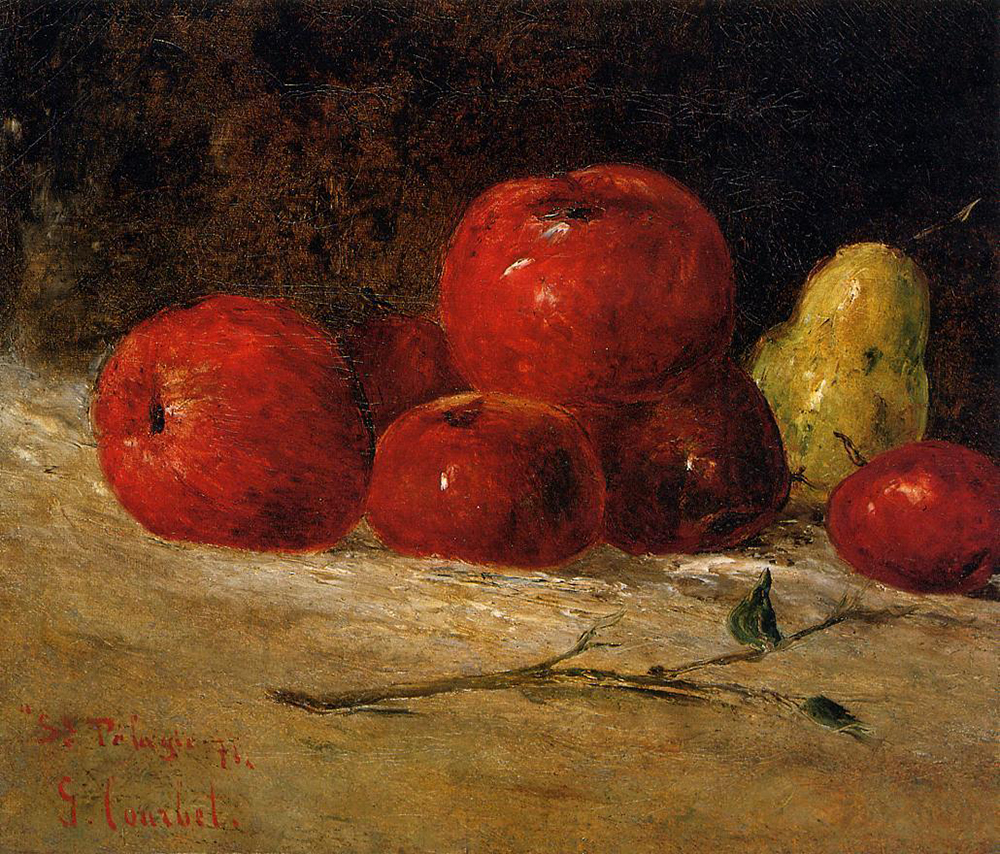
Still Life Apples and Pears by Gustave Courbet, 1871
1.3 तदा द्रष्टुः स्वरूपेऽवस्थानम् ।
TADĀ DRAṢṬUḤ SVA-RŪPE ‘VASTHĀNAM
tadā — then
draṣṭuḥ — of the seer (draṣṭṛ — the seer)
sva — one’s own (as in ‘swami’ — boss, owner)
rūpe — in being, (rūpa — form, body)
avasthānam — established, abiding, standing
from ‘ava’ — a prefix meaning away, down, off
and ‘sthāna’ — standing, from root ‘sthā,’ to stand’
When the vṛttis, or turnings of the mind, become quiet, when we are no longer bound by the patterns of our mind (Sūtra 1.2), we can fully connect with our inherent stability.
The seer (draṣṭṛ, pure consciousness) is unchanging and not subject to the vṛttis.
In the Bhagavad Gītā, the seer is called the Ātman, and is described by Kṛṣṇa in this way:
Neither is this (the embodied self) born nor does it die at any time,
Nor, having been, will it again come not to be.
Birthless, eternal, perpetual, primeval,
It is not slain when the body is slain. bg 2.20
Weapons do not pierce this (the Embodied Self),
Fire does not burn this,
Water does not wet this,
Nor does the wind cause it to wither. BG 2.23
It is said that this is unmanifest,
Unthinkable, and unchanging.
Therefore, having understood in this way,
You should not mourn. BG 2.25
—translation Winthrop Sargeant
— jenny meyer + barbara verrochi